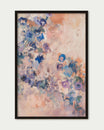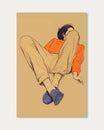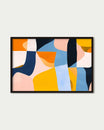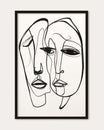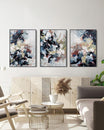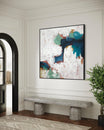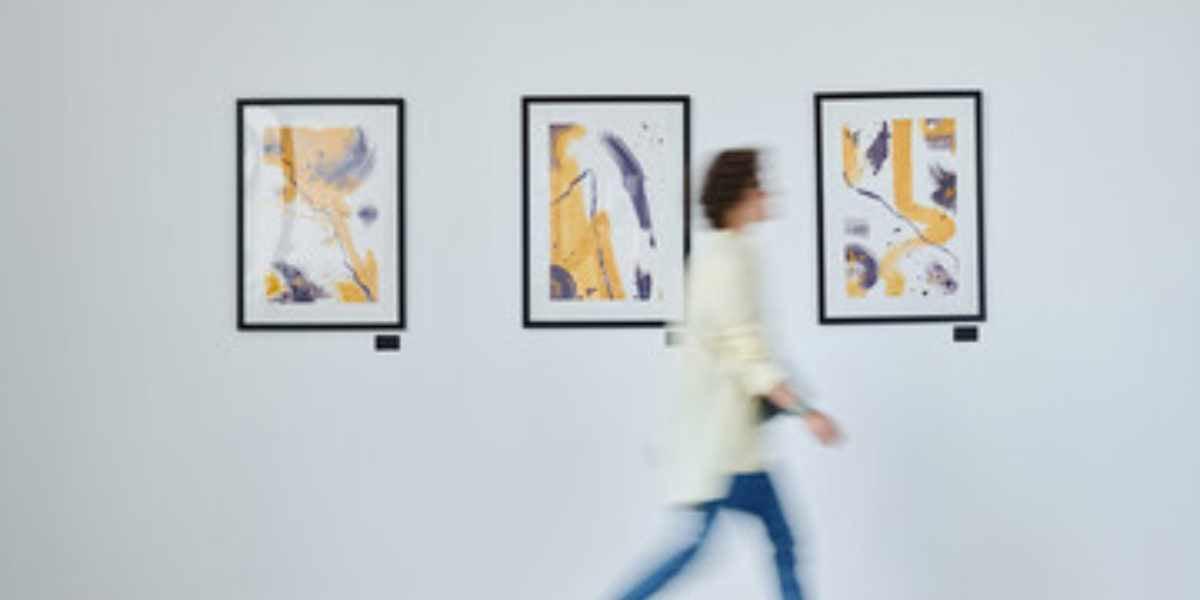Discover everything you need to know about contemporary artists and how to choose the perfect piece.
Diverse, exciting, and endlessly innovative - the world of contemporary art is a fascinating one, telling stories and taking us on a journey into another world. So, what exactly is contemporary art? Contemporary art is defined as the art of today: institutions have different ideas of exactly how you define the art of now.
The definition of contemporary art varies depending on galleries and institutions - the Institute of Contemporary Art in London was founded in 1947, and they classify contemporary art as anything created from 1947 onwards. However, the New Museum of Contemporary Art in New York uses the date of 1977 as the start of contemporary art. Some smaller galleries will say contemporary art is from 2000 onwards. Modernism - the forerunner to contemporary art, marked by a departure from tradition and high levels of experimentation - is generally thought of as existing from the 1860s to the 1970s.

The definition of contemporary art is also something that will depend on the era in which you are born. Artists working at the beginning of the 20th century may have classified their work as contemporary art, but in the 21st century, we would no longer call it that.
One thing that can be agreed on: unlike other artistic movements like Impressionism or Modernism, which have a unifying style, contemporary does not. Contemporary art seeks to explore the very nature of art, so one definition could be to look at famous works of art which challenge the notion of an artwork.
Instead of the artist being the only author of the work, the audience is now an integral part of the creative process and the finished piece. The idea of pure representation, challenged through the lens of modern art into abstraction, has now been replaced by a constant questioning and re-evaluation of what art even is - and what it means in our global society.
Fine Art Disciplines
Site-specific installations are one way contemporary art challenges traditional notions of art, and invites the audience on a journey to be shared with other people. The audience then experience an immersive insight into the artist’s inner world. Japanese artist Yayoi Kusama’s Mirror Rooms embody the experimental, universal nature of contemporary art. Interestingly, Yaoyoi Kusama’s career encompasses both modern and contemporary art periods - she can be defined as both a modern and a contemporary artist. She was born in the 1920s, and garnered international attention for her wide-ranging creative practice in 1960s New York. Her practice encompasses painting, sculpture, fashion design and writing, but it’s her Mirror Rooms and large-scale pumpkin installations which have become the most famous.
As you walk through Infinity Mirror Room you traverse a walkway of mirror tiles, surrounded by water. Brightly coloured LED lights flash on and off overhead. The small room is surrounded by mirrors, creating a disorientating and truly immersive experience that transports the audience to another world. It’s not an exaggeration to say Yayoi Kusama revolutionised the art world - forging her own path in the male dominated world of 1960s New York.

Photo credit: Infinity Mirror Room, Tate Modern © YAYOI KUSAMA

Photo credit:
All The Eternal Love I Have for the Pumpkins, 2016 , Ota Fine Arts and Victoria Miro © YAYOI KUSAMA
It might seem like traditional painting is on the back foot when it comes to contemporary art - but actually that’s not the case. There are many exciting young contemporary artists working with paint to create contemporary artworks that challenge, excite and experiment.
Lucy Bull, an American artist born in 1990, creates kaleidoscopic visions of colour that reference traditions of abstraction, and are highly textured. Their psychedelic swirls and whorls of colour simultaneously soothe and exhilarate - anchoring abstract art firmly in the present.
She uses between four and twenty layers of paint to create her work, playing with mark-making, twisting her brush around and scratching the paint. She utilises new and exciting techniques to channel the unconscious.
Painter Khari Turner creates rhythmic, fluid works that highlight his connection with Black history. This American artist uses innovative new techniques such as mixing oil and water to create opposing chemical structures. The resulting fluidity emphasises the graceful figures in his work, and the water is sourced from oceans, rivers and lakes that directly relate to his family’s heritage.
Photo credit: L’Officiel USA
Perhaps one of the earliest examples of the beginnings of contemporary art (at that time, co-existing alongside modern art) is Marcel Duchamps’s famous ‘Fountain’. Duchamp started his career as a Matisse-influenced figure painter, before creating his own personal brand of Cubism, which took inspiration from the Futurist movement. Nude Descending a Staircase uses abstract lines to illustrate movement - which was rejected by the Salon Des Independants because they said Duchamp was mocking Cubism.

Nude Descending a Staircase, by Marcel Duchamp. Photo credit: people.vcu
After 1912, he began creating his ‘readymades’. These were ordinary manufactured objects, which he repurposed and elevated to the status of art. His purpose was to disrupt the traditional way of thinking about the artist as a creator of original artworks or handmade objects. He posited that found objects - everyday, mundane items - could become art by their repositioning and repurposing.
‘Fountain’ remains his best known work: a urinal, signed with the name of R.Mutt. Highly shocking to the still-conservative society of 1917, it was entered into an exhibition of the Society of Independent Artists in New York and caused immense controversy.

© Succession Marcel Duchamp/ADAGP, Paris and DACS, London 2022
From the past to the present - the digital art revolution now characterises a lot of contemporary art. Digital artists create brushstrokes with their mouse, rather than a traditional paintbrush. Digital art can be created on a tablet or a computer, even a phone! Some of the most famous artists working today have embraced digital art. David Hockney’s vibrant and colourful iPad paintings challenge the way we look at technology and art coexisting together. Hockney’s colourful paintings bring a sense of fun, and joy to art - so different from the conventional idea of technology and art representing opposing ideals. Depicting the arrival of spring in Normandy, Hockney uses an app called Brushes to create his masterful works.

David Hockney, No. 147, 5th April 2020. iPad painting. © David Hockney.
Art history up until the 20th century was largely dominated by male artists - thought there are some exceptions like Frida Kahlo and Lee Miller, they had connections to the art world through men - in Lee Miller’s case through being Man Ray’s muse, and in Frida Kahlo’s case, her marriage to muralist Diego Rivera. Though the two women’s art now stands alone - with Frida Kahlo now having attained global fame, and Lee Miller the subject of a photographic retrospective at the Imperial War Museum - when they were making art, they weren’t considered ‘great artists’.
In the latter 20th century, things changed. The once male-dominated world of modern art became the more open, diverse world of contemporary art, opening up space for artists of colour and women artists. Taking the Turner Prize as an example - named after famous British artist J.M.W Turner, a nineteenth century artist whose evocative landscapes and use of light are globally recognised. From 1991 - 2006, the prize had an age limit of 50, hoping to promote the work of emerging, not just established artists. Now, the prize is open to anyone.
If you look at the shortlists from 1984 onwards, you can see the list is overwhelmingly dominated by male artists. Rachel Whiteread finally won in 1992, and since then the shortlists have been mixed towards male and female artists. In the 21st century, there has been a conscious effort to move away from purely male-dominated shortlists, and with a more diverse list of winners that includes artistic collectives, it emphasises the shift in the contemporary art world.
The Artist and Their Studio
Our idea of the studio has shifted with the era of contemporary art. Now, art can be installation-based, performance, and other site-specific mediums that don’t use the studio in the same way. But what about artists who market themselves essentially as a business, utilising a team of creatives to create the work?
It’s not a new concept, though it seems very 21st century. It was popularised in the 15th century, when well-known artists would develop long-lasting relationships with wealthy patrons, for whom they and a team of artists would create portraits, religious works, decorative works, and other projects.
Fast-forward to the 21st century, and artists like Jeff Koons and Damien Hirst are using a team of hundreds of specialist artists to create artworks they sign their names to. Just like Andy Warhol’s Factory, the artist studio has become a place of fast commerce, a professional business. In Jeff Koons’ studio, he has hundreds of assistants, all experts in painting, graphics, finishing, and other skills.
What does this mean for contemporary art? It borrows from traditions from the past, taking inspiration from artistic movements throughout history, but forming new and exciting ways of understanding the world around us.
We hope you enjoyed our guide to contemporary art. Let us know what you think on Facebook or Instagram, we’d love to hear from you!






